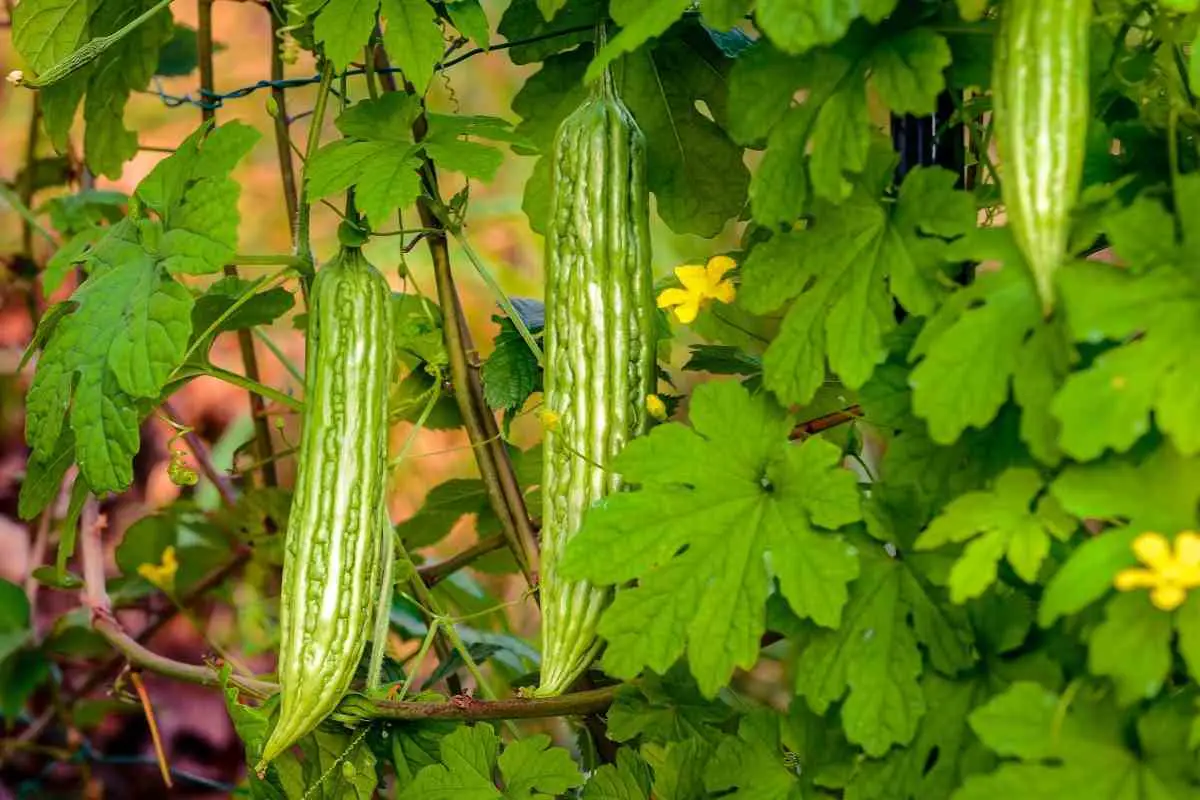In tropical regions including Africa, the Caribbean, and Southeast Asia, the bitter gourd is prized as a culinary delicacy and health food.
The philippine name for this vine fruit is “ampalaya” and it is steeped in cultural tradition and lore as a cure for a variety of ailments, or enjoyed in stir-fries, stews, and beverages.
If you would like to experience the curious, bitter tang of this knobbly green or yellow gourd, you can try cultivating it for yourself.
In this grower’s guide, we share all the essentials of growing ampalaya successfully.
What is ampalaya?
Momordica charantia or bitter gourd is the name for this subtropical vine that produces edible fruit.
It originated in Africa but can since spread to the Caribbean and Southeast Asia.
Its wide distribution has meant that many variants vary in shape and the level of bitterness.
Alternate names for this knobbly fruit include:
- bitter melon
- balsam-pear
- bitter apple
- bitter squash
Culinary uses and health properties of ampalaya
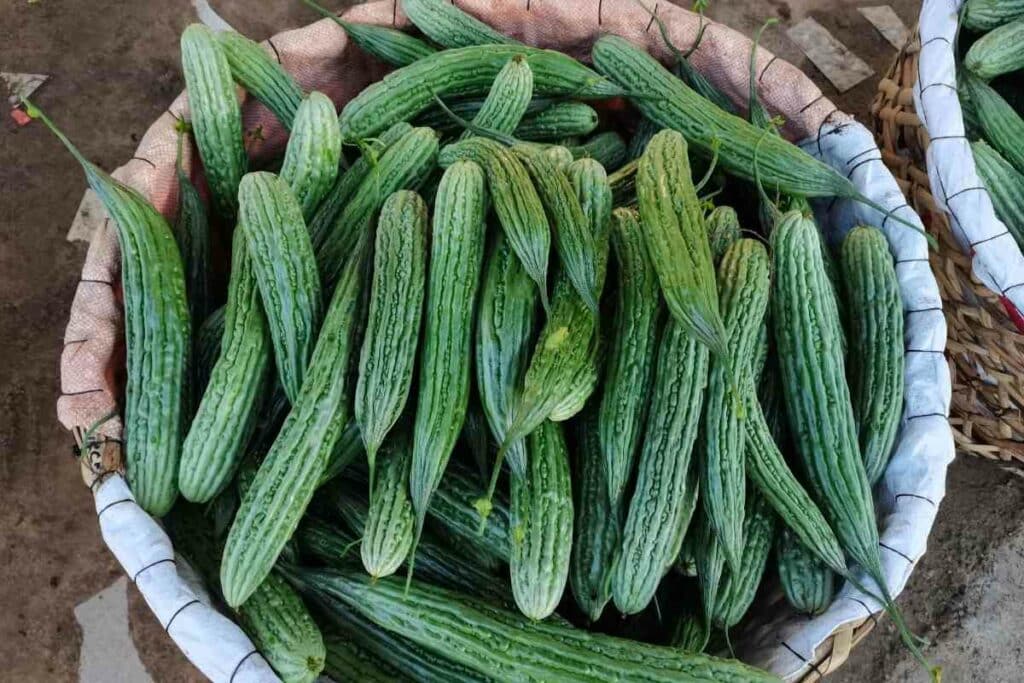
A key motivator for growing ampalaya is its notable medicinal properties including:
- Flavonoids and alkaloids that stimulate insulin production
- Rich in antioxidants
- Antimicrobial effects
- Reduces fever
- Source of vitamins A, B, C, phosphorus, calcium, iron, and folic acid
It is a feature of African, Caribbean, and Asian cooking, and even its shoots and leaves are eaten raw in salads.
Read on for some delicious ampalaya recipes!
Growing ampalaya
This is a tropical plant, but like many melons and other gourds, the conditions can be achieved to make a success of growing it in a wider climate range.
Here are the key points.
Climate
If you would like to grow ampalaya, you’ll find that the best USDA plant hardiness zones for ampalaya are between:
- Zone 9 has a minimum average temperature range of 25°F to 30°F (-3°C to -1°C). This zone includes states like Florida, Georgia, and Texas.
- Zone 11 has a minimum average temperature range of 40°F to 50°F (4.4°C to 10°C). This zone includes places like Puerto Rico and Hawaii.
As you can see warm weather is your friend, but you may be able to grow successfully in slightly cooler climates by using a hot house.
However, ampalaya thrives in the full sun.
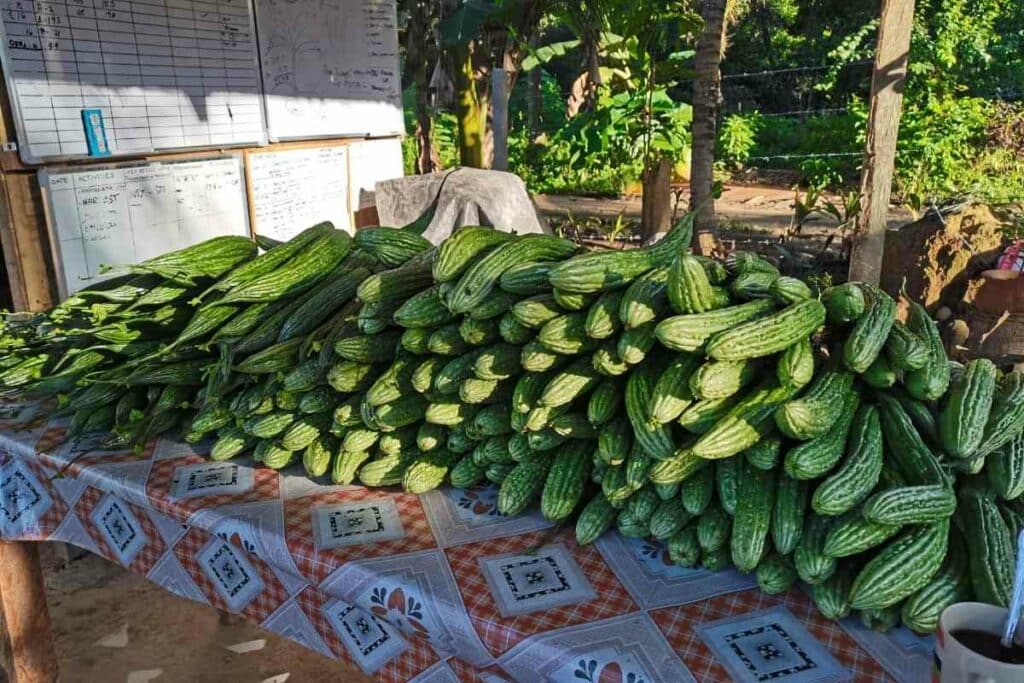
When do you plant ampalaya?
Ideally, ampalaya should be planted out in the winter (October to February) as the flowers are more likely to be fertilized in cooler weather leading to greater yield when warm weather arrives.
Ampalaya soil requirements
Ampalaya can be grown in all soil types but prefers sandy, loamy soil that drains well.
If the soil is nutrient-poor it should be prepared by adding organic material. An acid pH of between 5.5 to 6.7 is preferred.
Starting ampalaya from seed
To grow ampalaya from seed, you need to help germination along by breaking the tough seed coat of the ampalaya seed.
This can be done with a nail cutter or snips.
The seeds should then be soaked overnight in water, wrapped in a damp cloth, and left in a warm, dark place until the seed coat breaks further.
The seed is ready to be sown in a suitable potting medium, which drains well when the young vines are watered.
Works Best – Sow 2 to 3 seeds per pot. The seeds will germinate in 5 to 10 days when well-watered.
Transplanting ampalaya
Ampalaya seedlings can be planted when it develops their first true leaves.
This is usually around the third-week post-germination.
Alternatively – Many growers move the young plants to sacks or planters rather than directly sowing them into the soil.
Feeding and watering ampalaya
Though ampalaya grows in hot weather, it should not be excessively watered.
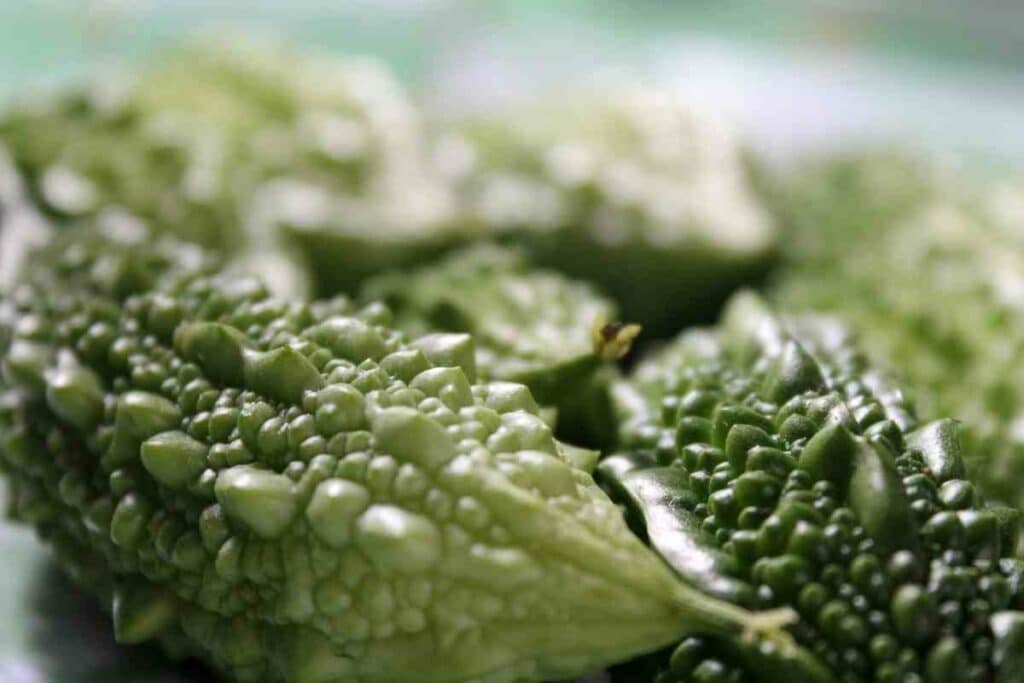
It will not thrive in waterlogged soil or excessively humid conditions, which can promote disease. Water every couple of days and at the same times as feeding.
Feeds can be applied weekly in the form of organic probiotics or NPK liquid fertilizer.
Some growers use urea of hummus-rich compost before planting out ampalaya.
Support ampalaya with trellis or frames
Like any fruiting vine, ampalaya loves to climb.
You will need to provide a trellis or frame to provide the necessary support, which improved the quality of fruit development.
You can purchase a pre-made trellis or create a custom structure that is capable of supporting vertical and overhead growth.
Use twine to support the vines that can grow as long as 16 feet.
Pruning ampalaya growth
Good pruning will improve the vigor, quality, and flavor of the ampalaya you grow.
Like tomatoes, prune the leaves and any lateral vines that are within 1 meter of the ground. Concentrate growth on your fruit by cutting any unproductive vines.
You can eat them fresh or cooked. Defective fruits should be similarly removed.
How long does ampalaya take to grow?
Ampalaya grows at the same pace as squash and other gourds, producing fruit after 60 to 70 days.
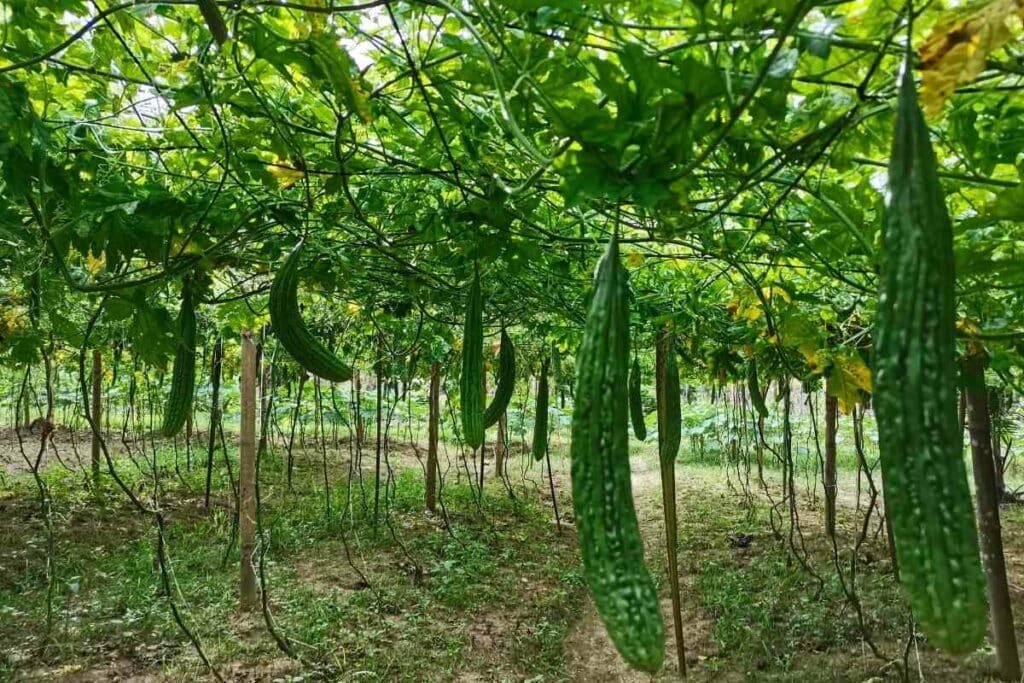
They should be ready between 18 and 20 days after blooming.
Once the vine starts producing you can start harvesting them as these thick, green juicy fruits every 2 to 4 days.
When you cut a ripe ampalaya open, the seeds will still be immature.
Harvesting ampalaya
You can harvest ampalaya fruit by supporting the gourd in one hand and cutting the peduncle with a sharp knife.
Do ampalaya have pests or diseases?
- The most damaging pest of ampalaya is the fruitfly which can rapidly deteriorate and destroy developing fruits. They are controlled by wrapping the fruit to protect it from the fruit fly or spraying attractants to divert their attention.
- Bacterial wilt is a common disease of vine fruit and gourds and can rapidly spread and kill ampalaya plants. This disease can be prevented by encouraging good microorganisms in the soil and removing any disease or damaged plants promptly.
Feast on your harvested ampalaya!
Healthy vigorous ampalaya plants can be prolific croppers, so you will need to know what to do with all that fruit.
Here are frequently asked questions for cooking ampalaya fruit.
How do you cook with ampalaya?
Ampalaya can be cooked in a variety of ways.
It is especially delicious sauteed or stir-fried with garlic and onions.
To prepare this fruit:
- Wash and remove the ends of the ampalaya.
- Cut it in half and remove the immature seeds and strings.
- Slice it up and fry it with your other vegetables and seasonings.
- Serve hot!
Here are some classic ampalaya recipes for you to try:
- Ampalaya con Carne
- Ampalaya Guisado
- Ginisang Ampalaya
How do you make ampalaya not bitter when cooking?
The bitterness of ampalaya can be removed with salt.
Many people rub salt into the flesh or soak the fruit in salt water to remove bitterness.
Do this 20 to 30 minutes before cooking and rinse before you add it to the pan!
How long does it take for ampalaya to cook?
Like any other stir-fried veg, you only need a few minutes to enjoy your ampalaya crisp and crunchy, just like courgette, but with a strong bitterness.
Rounding up
If you have the weather for it, growing ampalaya will keep some good, nutritious food on your table.
It’s a great growing project for your urban garden or homestead.
The bitterness is marked but we’re sure it’ll grow on you!
